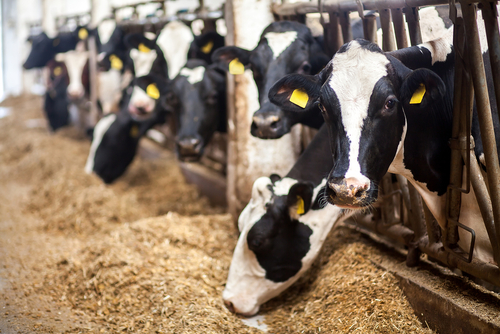
U.S. Department of Homeland Security (DHS) Science and Technology Directorate (S&T) inventors John Neilan and Michael Puckette have come up with a breakthrough to treat foot-and-mouth disease (FMD) in livestock.
FMD is a disease that is extremely contagious and afflicts animals with cloven hooves like cows, pigs, sheep, and deer. It causes painful blisters in and around the mouth, nose, mammary glands, and hooves. When the blisters burst, they leave raw open wounds that are susceptible to secondary bacterial infections. The animals experience discomfort and are disinterested in eating. The mortality rate in adult livestock is relatively low, but animals are often left in a weakened state and are generally incapable of producing draught-animal power, milk, meat, or offspring at the levels they had before infection.
While there are FMD vaccines, there are significant issues with them. First, FMD vaccine manufacturing is historically based on injecting inactivated (dead) FMDV into livestock. Since the United States has been an FMD-free country for almost 100 years, these FMD vaccines are prohibited from being produced in the country.
“Manufacturing of FMDV prior to its inactivation carries the risk of accidental release if proper biosafety procedures are not followed,” Puckette, the project leader, said. “It also carries the risk of an accidental outbreak if there are errors in the manufacturing procedure.”
The new technology invented by Neilan and Puckette will allow FMD vaccine manufacturing in the U.S. because it does not require the use of live FMDV for vaccine production. The team used synthetic biology to alter and fuse multiple parts of the FMDV genome together to create a vaccine that only uses a portion of the virus genome, instead of a live virus.
Since none of the vaccine components are extracted from viable virus, it is free from the risks associated with inactivated virus vaccines. This is a much safer process for making the FMD vaccine, plus the United States is allowed to manufacture the vaccine. The vaccine technology also allows for faster development times and less expensive manufacturing processes.
“A key driver of vaccines, especially livestock vaccines, is cost,” Neilan, S&T Science Director at the Plum Island Animal Disease Center (PIADC), said. “More efficient vaccine manufacturing translates into lower costs, making newer vaccine technologies economically viable.”
More than a dozen team members worked on this breakthrough project for five years.
“I think it has always been my hope to develop something useful, something that makes an actual impact rather than publishing scientific discoveries in a paper that few people will ever read,” Puckette said. “I think this work may actually be that, and it makes me feel good about the work I and my S&T teammates have done.”




